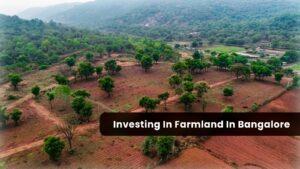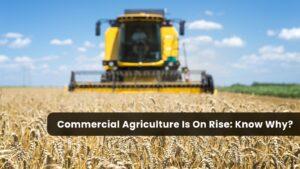Due to space limitations, competition with other land uses, and the need to balance agricultural production with urban growth, urban farming presents unique challenges. The following list includes a number of difficulties and potential solutions for successfully maintaining farmlands in urban settings.
Space Restrictions
Challenges: Due to the limited amount of land that can be used for farming, agricultural production and the variety of crops that can be grown are limited, making it difficult to maximize agricultural productivity. Due to growing rivalry among farmers and the scarcity of agricultural land in metropolitan areas, land prices may rise.
Solutions: The following options can be used to solve the space issue in managed farmlands, including utilizing vertical space by growing crops in stacked layers, such as in hydroponic systems or vertical towers, to increase agricultural yields while taking up less area. To maximize earnings on limited ground, concentrate on high-value crops with shorter growing cycles and less area requirements, such as microgreens or specialty herbs. By providing shared gardening areas where people or groups can cooperatively cultivate small plots of land, you can encourage community involvement in urban agriculture.
Land Use Conflicts
Challenges: Conflict over land usage results from competition for land between many parties who have different objectives and interests. Land use conflicts can arise in the context of managed farmlands in urban surroundings when urban development encroaches upon agricultural areas, creating tensions and difficulties for farmers. There is more demand to develop residential, commercial, or industrial districts on agricultural land as cities grow and populations rise. Because existing farmland is frequently in conflict with urban expansion, there are a number of issues that arise, including the loss of farmland, decreased agricultural output, difficulties for farmers’ economies, and questions about food security.
Solutions: To resolve land use disputes involving managed farmlands Create integrated land use plans that allot sufficient spaces for agriculture inside urban areas while taking into account the value of farms. Put in place zoning laws that safeguard agricultural land and guarantee its preservation for farming. Create legal safeguards, such as conservation easements, to keep farmland in agricultural use and prevent its development and educate the public about the value of protecting farmland, the advantages of supporting local food production, and the effects of land use conflicts on sustainable agriculture.
Soil Contamination
Challenges: When dangerous substances, such as heavy metals, pesticides, industrial pollutants, or hazardous chemicals, are present in the soil at levels that could negatively affect plant development, soil health, and food safety, this is referred to as soil contamination. Plant growth can be hampered by contaminated soil, which can also lower crop yields and affect the quality of agricultural products. Contaminants in the soil can be absorbed by crops and build up in edible components, potentially endangering consumer health. Ecosystem health and biodiversity may be impacted by the leaching of contaminants from contaminated soil into neighboring groundwater, surface water, and ecosystems.
Solutions: To avoid contaminating the soil Conduct regular soil contamination tests to determine the degree and scope of pollution and to help you decide on the best management approaches. Depending on the kind and extent of the contamination, employ the appropriate soil remediation measures. To improve soil structure, fertility, and microbial activity—which can help reduce the impacts of some toxins and encourage plant growth—apply soil amendments like organic matter, compost, or lime. Reduce the use of chemical pesticides and the possibility of soil contamination by agrochemicals by using IPM practices. To prevent soil contamination, arm farmers with information and resources on best management practices, soil conservation methods, and safe chemical handling. And Enforce waste disposal, chemical use, and land repair laws to stop further soil deterioration and encourage ethical farming methods.
Efficient Use of Water Resources in Urban Farming
Challenges: In managed farmlands, efficient use of water resources is of utmost importance, particularly in areas where water scarcity or competition for water prevails. The amount of water available for irrigation and agricultural uses may be limited if water resources, including surface water and groundwater, are few. Water waste and decreased water use efficiency can result from improper irrigation procedures, such as overwatering or the use of ineffective irrigation devices. Excessive groundwater or river water extraction can deplete the water table, degrade aquatic ecosystems, result in habitat loss, and cause land subsidence.
Solutions: Utilizing modern irrigation methods to supply water directly to plant roots, such as drip irrigation, micro-sprinklers, or precision irrigation systems, reduces evaporation and increases water use effectiveness. Choose drought-tolerant crop varieties, and use crop rotation techniques to balance crop water needs with water supplies that are readily available. Build small-scale water storage structures like ponds, tanks, or cisterns to collect and conserve extra irrigation water or rainwater for use in dry spells. And Enforce water laws, support water pricing strategies that promote conservation, and offer rewards to farmers that use water sparingly.
Noise and Air Pollution in Urban Farmlands
Challenges: In urban farmlands, noise and air pollution can have a negative impact on the health of the crops, farm operations, and the general well-being of farmers and the surrounding people. Due to adjacent industrial activity, transportation, and urban infrastructure, metropolitan areas are frequently typified by high levels of noise and air pollution. Noise pollution from industrial machinery or traffic can interfere with plant growth and development, reducing agricultural yields and quality. For farmers and adjacent people, air pollution, such as particulate matter, chemical emissions, and vehicle exhaust, can worsen respiratory conditions and other health difficulties. The long-term viability of the farmland is impacted by the adverse impacts that air pollution has on ecosystem functioning, beneficial insects, and soil health.
Solutions: Reduce noise levels that reach farmland by building physical barriers or using natural features like hedges or trees to create a quiet zone between loud sources and crops. To act as natural filters, plant plants or create green spaces around agriculture to absorb and reduce air pollutants and to reduce noise. Regularly check the farmland’s air quality to find the sources of pollution and take the appropriate action to lower emissions and exposure concerns. Encourage the use of environmentally friendly transportation options, such as electric cars or bicycles, for travel to and from the farmland, thereby reducing overall air pollution. Implement measures to control emissions from on-farm activities, such as optimizing machinery performance, using low-emission vehicles, and promoting clean energy sources.
Climate Change Adaptation
Challenges: Farmers must modify their cultivation techniques since altering temperature and precipitation patterns can have an impact on crop development, phenology, and production. Climate change may result in more frequent and severe heat waves, floods, storms, or droughts, endangering the health of crops and farm infrastructure. The implementation of innovative irrigation schemes and effective water management techniques may be required due to changes in precipitation patterns and the availability of water resources. As a result, it may be necessary to react to changing market conditions. It may also have cascading effects on market demand, price, and supply chains.
Solutions: Encourage farmers to use climate-resilient crop types that are better suited to changing growing circumstances and pest challenges, as well as to diversify their crop selections. Make educated judgments about planting times, irrigation management, and crop protection strategies by utilizing weather monitoring systems and climatic data. Encourage farmers to purchase crop insurance and use risk management techniques to guard against production losses and market volatility caused by climate change. Implement integrated pest and disease management strategies that include cultural practices, targeted pesticide use, and biological controls to adapt to shifting pest dynamics.
Mogg’s Estates, being a managed farmland company in Bangalore, aims to address these challenges by implementing innovative solutions that effectively manage farmlands in urban environments, contribute to food security, sustainable development and foster a closer connection between urban residents and their food sources.



